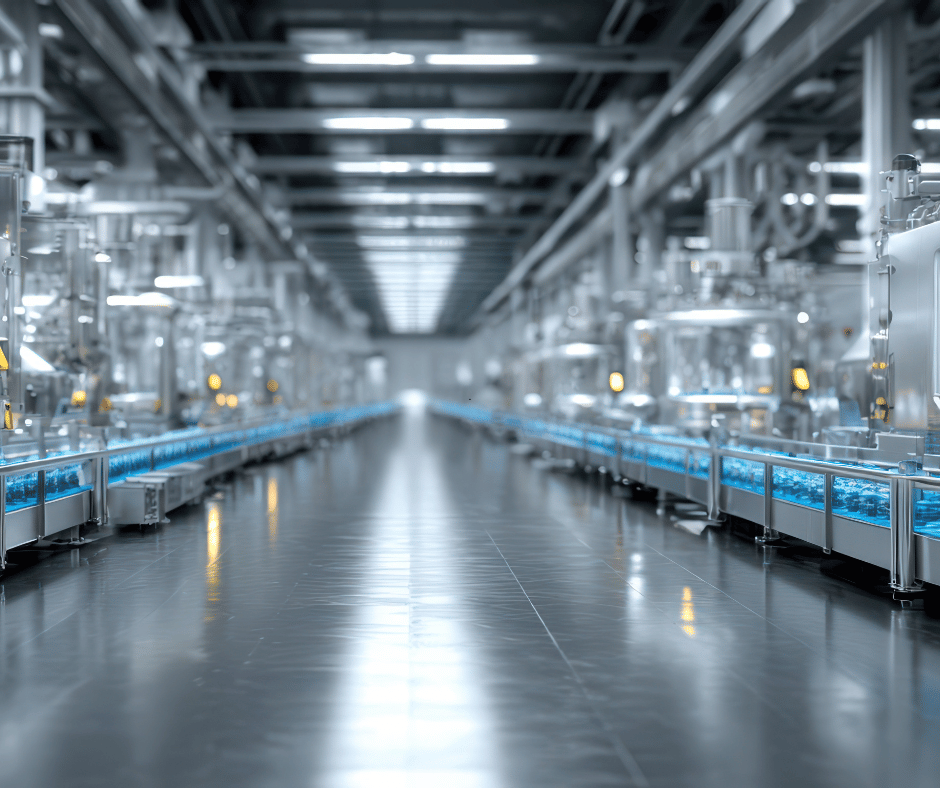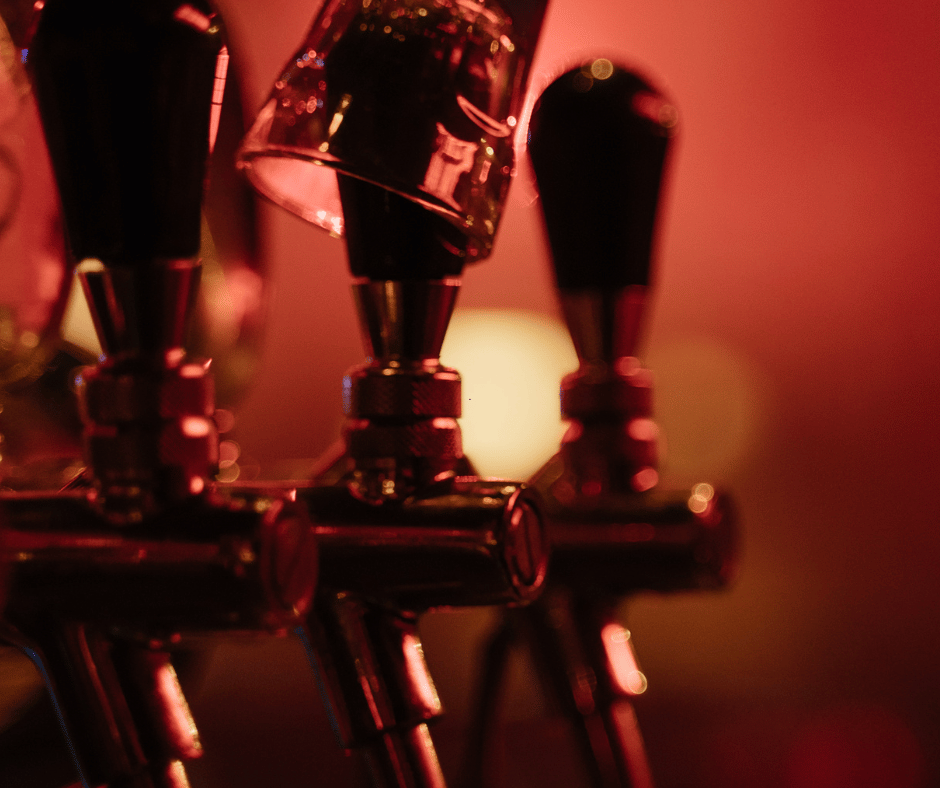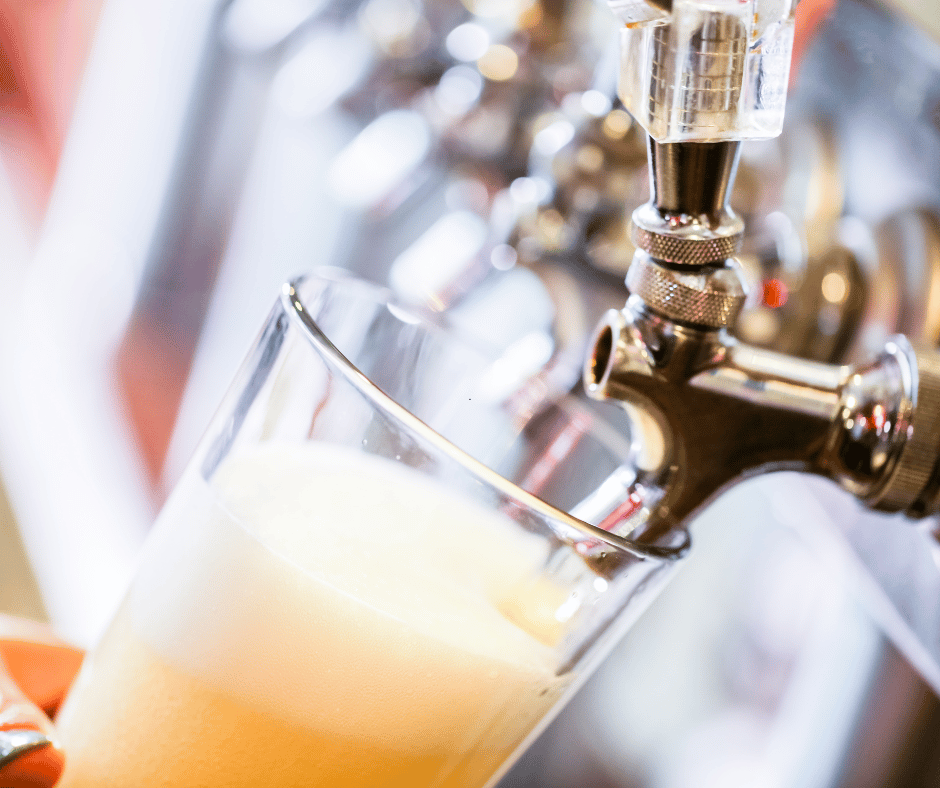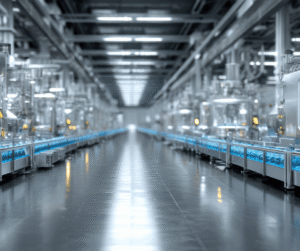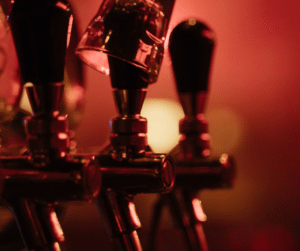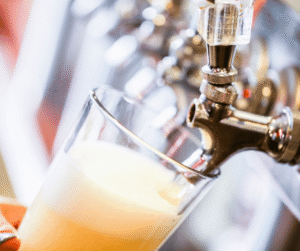Gas drives every pint you pour. It does more than push beer to the tap. It shapes flavour, mouthfeel, and foam.
Most dispense issues trace back to gas, not the beer. Small changes in gas purity or pressure cause big problems. Flat pours. Harsh aromas. Foam that collapses too fast. Customers notice immediately.
Two gases are used most often. Pure CO₂ for lagers and highly carbonated styles. CO₂/N₂ blends for stouts and some ales. The ratio matters. So does gas quality at the point of use.
Beverage-grade CO₂ should be neutral and clean. In reality, trace contaminants still slip through. Hydrocarbons, hydrogen sulphide, and moisture can taint aroma and taste. Poor control of pressure and temperature then amplifies the fault.
This guide explains how gas affects draught beer. You’ll learn the science in simple terms. You’ll see common problems and how to spot them. You’ll get practical steps, checks, and best practices to improve pour quality. Manage gas well and you improve taste, consistency, and customer satisfaction.
Why Gas Quality Matters in Draught Beer Systems
CO₂ is more than the force that moves beer from keg to tap. It’s a core ingredient that influences every aspect of how draught beer looks, smells, and tastes.
The Role of CO₂ in Carbonation and Dispense Pressure
In the keg, CO₂ maintains carbonation by dissolving under pressure. This keeps beer lively and prevents it from going flat. During dispense, the same gas creates the push that delivers beer through lines, taps, and nozzles.
When the balance of pressure and gas purity is right, each pour is consistent – smooth, bright, and stable. When it’s wrong, beer either gushes with foam or lies flat in the glass.
Gas Shapes Mouthfeel, Flavour, and Foam
CO₂ defines how beer feels on the palate. Too little, and the mouthfeel is dull and heavy. Too much, and it feels harsh or acidic.
Flavour is equally sensitive. CO₂ helps carry aroma compounds to the nose and lifts flavour notes on the tongue. If the gas contains contaminants, it can mute these qualities or add unpleasant tastes.
Foam stability also depends on gas quality. Clean CO₂ helps form tight, long-lasting heads. Impure gas, containing moisture or hydrocarbons, breaks that structure down within seconds.
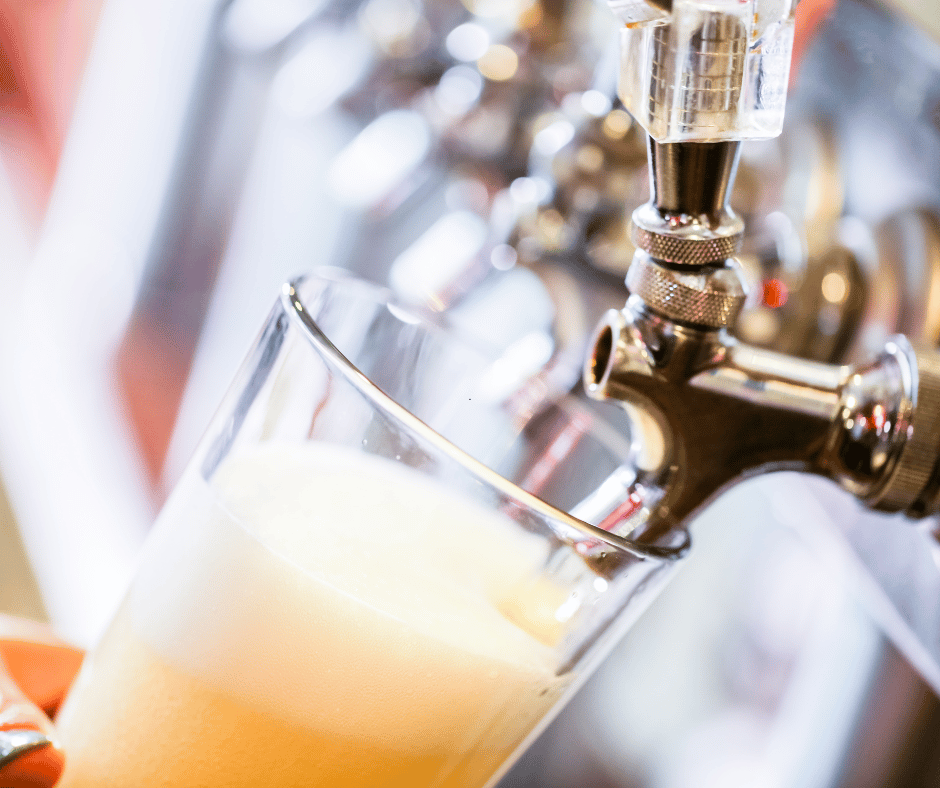
Beverage-Grade CO₂ Isn’t Always Perfect
Suppliers often describe their product as “beverage-grade.” This means it meets minimum purity levels set by industry bodies such as ISBT and EIGA. However, compliance alone doesn’t guarantee perfection. Trace impurities – hydrogen sulphide, carbonyl sulphide, and aromatic hydrocarbons – can still be present in parts per million.
These compounds may pass inspection but still affect sensory quality. The result is subtle: a faint chemical smell, a bitter aftertaste, or a beer that goes flat too quickly.
Preventing Hidden Contamination
Sure Purity’s Carboguard filtration technology removes these invisible threats. Multi-stage CO₂ polishing traps and neutralises contaminants before the gas reaches the beer. Breweries that adopt advanced filtration often find immediate improvements – brighter flavour, longer-lasting foam, and cleaner aroma.
Even compliant CO₂ can compromise beer quality. That’s why ongoing monitoring and polishing filtration are vital to maintaining the taste and consistency customers expect.
How Gas Interacts with Beer During Dispense
Understanding how gas behaves helps you control every pour. The interaction between CO₂, nitrogen, and beer determines carbonation, flavour, and texture. Get the balance right, and every pint will pour perfectly.
CO₂ Absorption and Carbonation
When CO₂ comes into contact with beer under pressure, it begins to dissolve into the liquid. This process creates carbonation – the fizz that gives beer its sparkle and refreshing mouthfeel.
The science behind it is simple. Henry’s Law states that the amount of gas dissolved in a liquid is directly proportional to the pressure applied to it. In short, higher pressure equals more carbonation; lower pressure means less.
Temperature plays an equally important role. Cold beer absorbs CO₂ more easily, while warmer beer releases it. That’s why cellar temperatures and line cooling systems are vital for consistent pours. If temperature or pressure fluctuate, carbonation levels shift, and beer quality suffers.
The right balance creates a lively yet stable beer – crisp, aromatic, and easy to drink. Too much CO₂, however, results in harsh bubbles and excess foam. Too little, and the beer tastes flat and lifeless.
Maintaining correct gas pressure and storage temperature keeps carbonation steady and prevents waste from over-foaming or underfilled glasses.
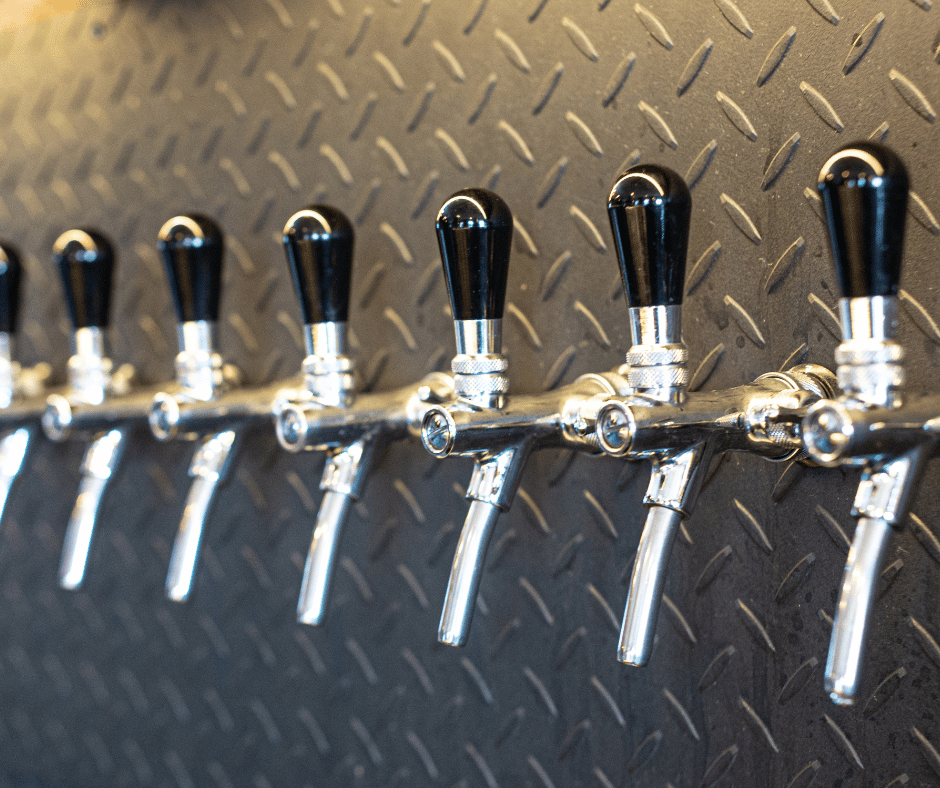
Nitrogen Blends and Their Effect
Not all beers use pure CO₂. Some, such as stouts and certain ales, rely on mixed gas blends of CO₂ and nitrogen. Nitrogen behaves differently to CO₂ – it’s less soluble and produces smaller, tighter bubbles.
This gives beers a smoother texture and a dense, creamy head. The familiar cascading effect seen in stouts like Guinness is a result of nitrogen bubbles settling through the glass.
However, nitrogen ratios must be carefully controlled. Too much nitrogen can make a beer taste flat or under-carbonated. Too little causes over-carbonation and excessive foam.
Most stouts and ales pour best with gas blends containing around 25–30% CO₂ and 70–75% nitrogen, though ratios can vary depending on style and system setup.
When gas blends fall outside these ranges, problems appear quickly – uneven pours, changing mouthfeel, or weak head retention.
Regular monitoring of both pressure and blend ratio ensures consistency. Combined with clean, high-quality gas, these checks help deliver the smooth, professional pour that customers expect from every pint.
Common Problems Caused by Gas Issues
Even small problems in your gas supply can change how draught beer looks, tastes, and behaves. Most faults fall into a few familiar categories – flat beer, excess foam, strange smells, or shortened shelf life. Each stems from poor gas management or contamination.
Flat or Foamy Beer
A pint that pours flat or explodes with foam usually points to the same cause: imbalance.
Low CO₂ pressure, leaking fittings, or gas contaminated with moisture or oil all interfere with carbonation. When pressure is too low, CO₂ escapes from the beer, leaving it dull, flat, and lifeless. Too much pressure or contaminated gas can cause over-carbonation, leading to wild foaming at the tap.
You’ll notice the signs immediately: a head that disappears within seconds, large coarse bubbles, or a beer that feels sharp on the tongue. Regular pressure checks and proper cellar temperatures help, but the real solution starts with clean, stable CO₂.
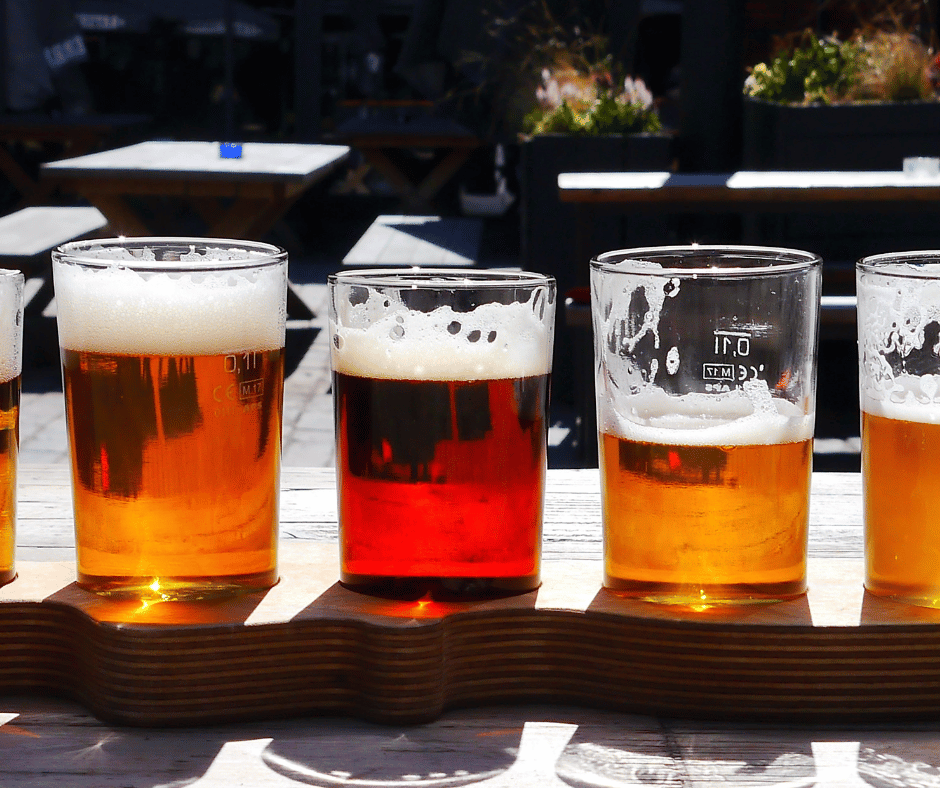
Off-Flavours and Odours
“Dirty CO₂” is a growing issue in modern dispense systems. Even CO₂ that meets beverage-grade standards can carry trace impurities such as hydrogen sulphide, carbonyl sulphide, and hydrocarbons. These compounds may exist in parts per million, but their sensory impact is unmistakable.
Hydrogen sulphide gives beer a sulphurous “rotten egg” smell. Hydrocarbons can add a chemical or oily flavour that lingers on the palate. These faults have nothing to do with brewing skill or line hygiene – they come directly from gas contamination.
Many pubs and breweries have faced this problem without realising it. In one small craft brewery, customer complaints about “plastic” aromas were eventually traced back to contaminated CO₂ cylinders. After fitting a Carboguard Mini filter, the issue disappeared overnight, and beer quality returned to normal.
Filtration removes these impurities before they reach the beer, ensuring the CO₂ remains clean and taste-neutral.
Shortened Shelf Life
Gas quality also affects how long beer stays fresh. Impure CO₂ can contain oxygen or other reactive compounds that accelerate oxidation. Over time, this dulls flavour, causes colour changes, and shortens shelf life.
Poor gas hygiene (such as unclean lines or moisture in the system) makes the problem worse. It creates an environment where contaminants build up, damaging both beer quality and equipment.
A large UK bar group found that contaminated gas supplies were cutting keg life by nearly a week. After switching to filtered CO₂ and improving line maintenance, waste dropped by 40%.
Clean, stable gas isn’t just about flavour; it’s about protecting stock, reducing loss, and keeping systems reliable.
How to Ensure the Right Gas Quality for Draught Beer
Consistent gas quality starts long before the beer reaches the tap. It depends on sourcing, filtration, and ongoing maintenance. Each step in this process helps keep CO₂ pure, stable, and compliant — protecting flavour, foam, and freshness.
Sourcing Beverage-Grade CO₂
Not all CO₂ is created equal. Industrial-grade CO₂ is used for welding, cooling, or chemical production. It’s cheaper but not suitable for beverages. It often contains trace levels of hydrocarbons, sulphur compounds, and moisture that can easily spoil beer.
Beverage-grade CO₂ is refined to meet strict purity standards set by the International Society of Beverage Technologists (ISBT) and the European Industrial Gases Association (EIGA). These bodies define safe limits for impurities such as hydrogen sulphide, carbonyl sulphide, and hydrocarbons.
When buying gas, always ask suppliers for certification. A Certificate of Analysis (COA) should accompany every batch, showing it meets ISBT and EIGA specifications. However, remember that certification only confirms quality at the source. Gas can still pick up contaminants during transport, storage, or dispense. On-site testing and filtration remain essential.
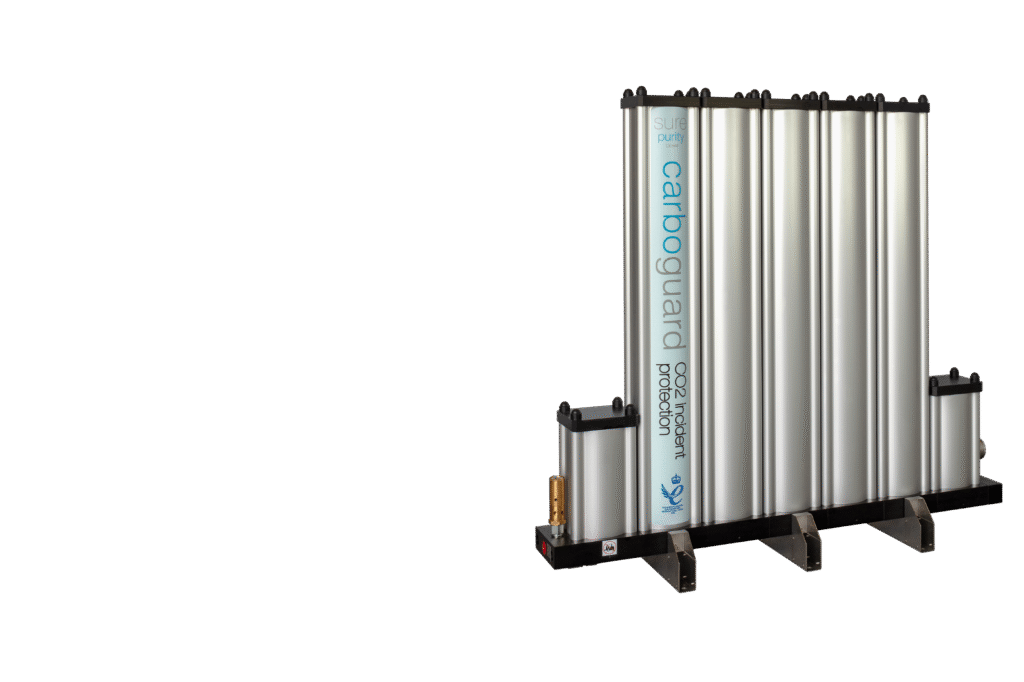
Installing a CO₂ Polishing Filter
Even with beverage-grade gas, trace impurities can make their way into your system. Installing a CO₂ polishing filter is the most effective way to eliminate this risk.
Sure Purity’s Carboguard Mini is designed specifically for draught beer dispense systems. It uses multi-stage filtration to remove chemical impurities such as hydrogen sulphide, carbonyl sulphide, hydrocarbons, and moisture before they enter the beer.
The result is cleaner gas, brighter flavour, and more stable foam. Brewers and bar operators often notice an immediate improvement – sharper aroma, consistent carbonation, and longer-lasting head retention.
Compared with alternatives such as the Parker PCO₂ system, Carboguard filters offer extended service life, easier maintenance, and measurable cost savings through reduced waste and downtime.
Regular Testing and Maintenance
Maintaining CO₂ quality isn’t a one-off task. Routine checks keep everything running smoothly and prevent problems from building up unnoticed.
- Pressure checks: Verify system pressure matches the beer style and equipment setup.
- Gas testing: Periodically test CO₂ purity to ensure compliance and detect contamination early.
- Line maintenance: Clean and sanitise gas lines, regulators, and fittings to stop residue and moisture from building up.
Best Practices for Maintaining Consistent Dispense Quality
Delivering a perfect pint every time depends on consistency – in pressure, cleanliness, and gas composition. Following a few key practices keeps beer quality stable and customers satisfied.
Monitor Gas Ratios and Pressure
Every beer style needs its own balance of CO₂ and nitrogen. Getting this ratio right determines how the beer looks, tastes, and feels.
- Lagers and pilsners use 100% CO₂, maintaining a lively sparkle and crisp finish.
- Ales and stouts often perform best with 25–30% CO₂ and 70–75% nitrogen. The nitrogen gives a smoother mouthfeel and creamy head.
- Craft and speciality beers may require bespoke ratios depending on carbonation goals.
Always monitor both pressure and gas blend to prevent faults. Too much CO₂ causes excessive foaming and sharpness, while too little makes beer flat and heavy. Keeping regulators calibrated and storage conditions stable ensures pressure remains consistent from keg to tap.
Maintain System Hygiene
Gas quality is only one part of the equation. Even pure CO₂ can pick up contaminants if it travels through dirty or poorly maintained lines. Regular cleaning removes moisture, oil, and residue that can cause pressure fluctuations or chemical taint.
Schedule routine line cleaning and equipment inspection. Store cylinders upright in a cool, dry place, away from potential contamination sources. Proper storage also reduces the risk of corrosion and gas leaks.
System hygiene supports gas purity and prevents cross-contamination between different beverages, ensuring consistent quality across every tap.
Partner with Technical Specialists
Working with trained technicians gives breweries and venues an edge. Qualified service teams can identify inefficiencies, fine-tune gas pressures, and test purity levels accurately. They also help integrate filtration and monitoring systems that keep operations running at peak performance.
We takes a consultative approach to CO₂ quality assurance. Their team provides technical advice, system audits, and guidance on implementing multi-stage Carboguard filtration for maximum protection. This partnership-driven model helps breweries, bars, and distributors maintain long-term quality and compliance with industry standards.
Final Thoughts
Gas quality is often the hidden variable behind draught beer performance. It’s easy to focus on brewing, storage, and line cleaning while overlooking the gas that drives the whole system. Yet this invisible factor shapes every pour – from the strength of carbonation to the stability of the foam and the freshness of the flavour.
Even when beer is brewed to perfection, poor gas purity can undo that work in seconds. Contaminants in CO₂ or incorrect gas blends cause flat pours, harsh aromas, or inconsistent texture. Managing gas quality with the same care given to brewing ingredients ensures your beer tastes exactly as intended, from the first pint to the last.
Modern filtration makes this process simple and measurable. Sure Purity’s Carboguard Mini is engineered to remove trace contaminants before they reach the beer, guaranteeing clean, stable CO₂ at every dispense point. It’s a smart investment in consistency, customer satisfaction, and brand trust.
Contact our team today to find out how we can help you.

